

PROJECTS
ART
ARCH
MATTER
SOUND
BOOKS
BIO
FEET
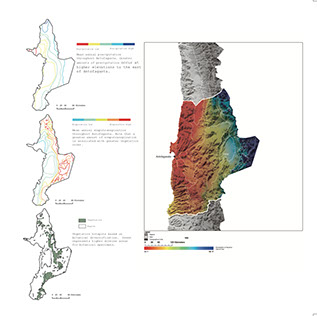

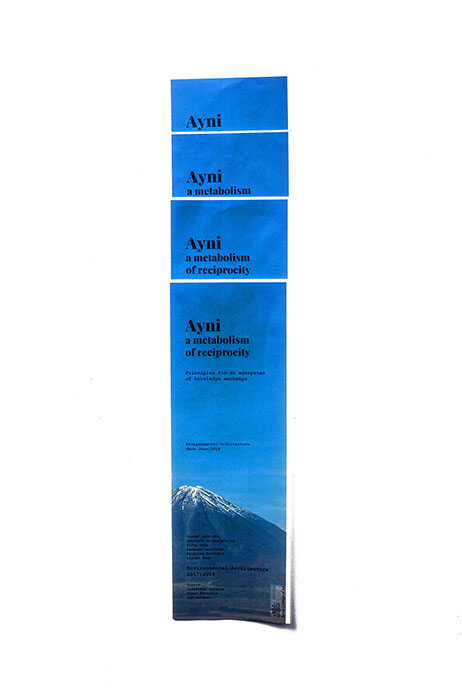
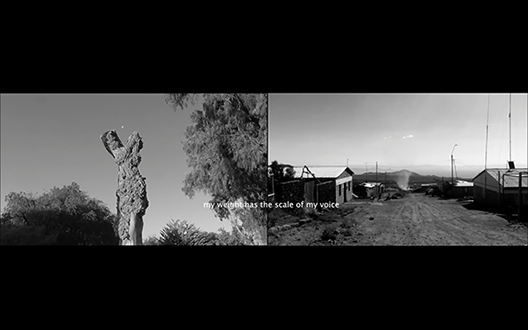
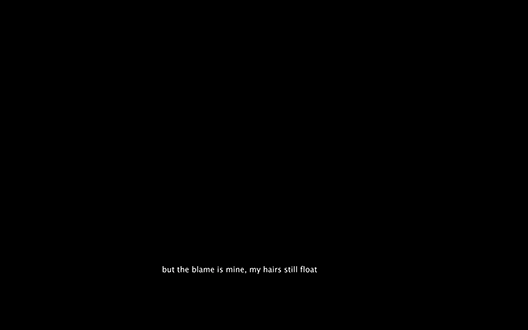

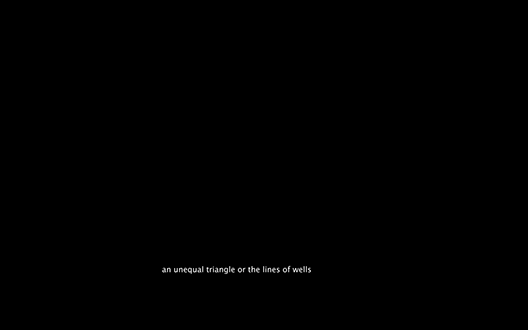
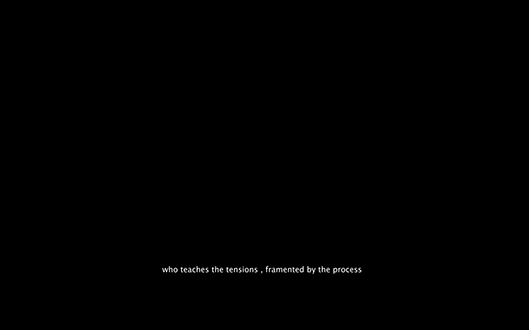
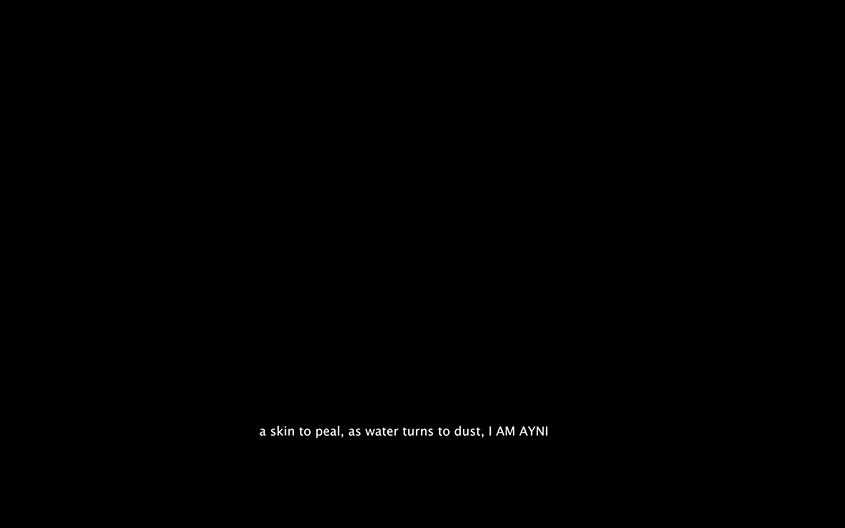

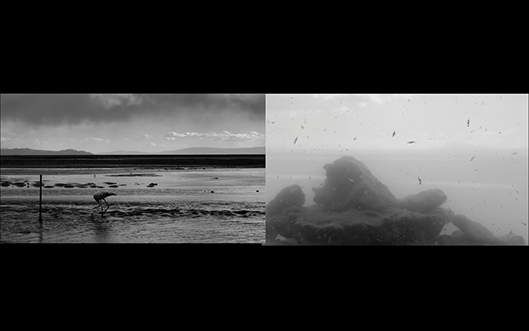
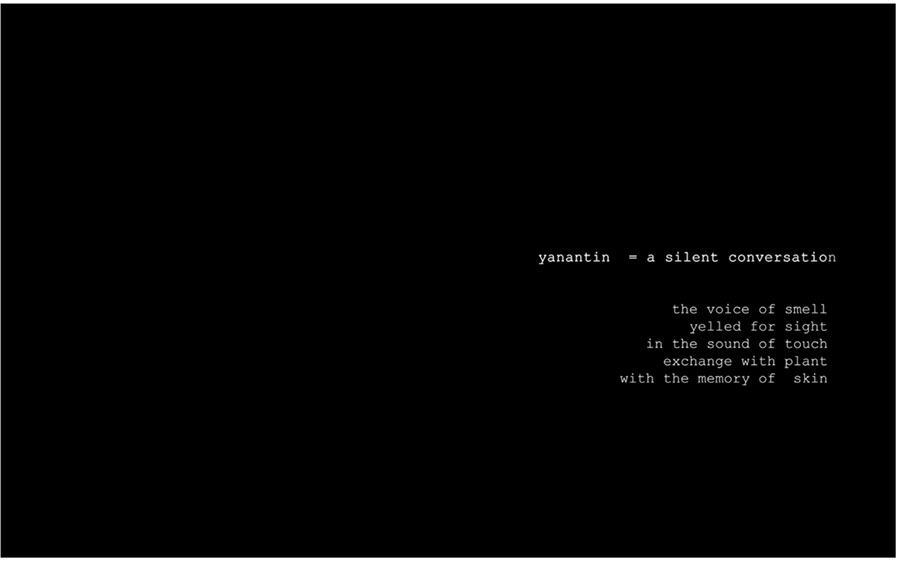

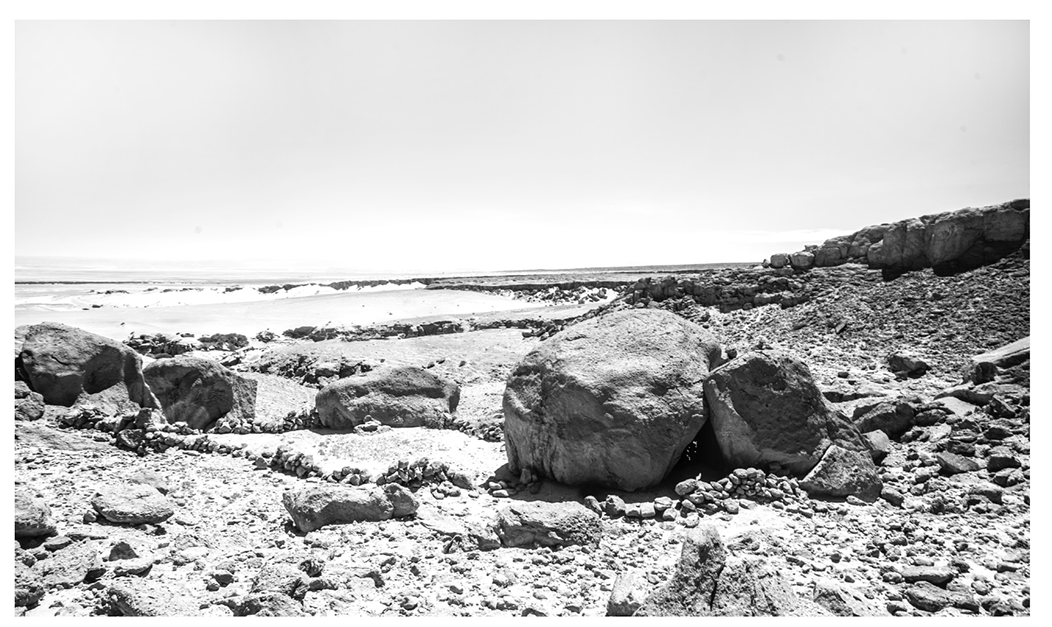
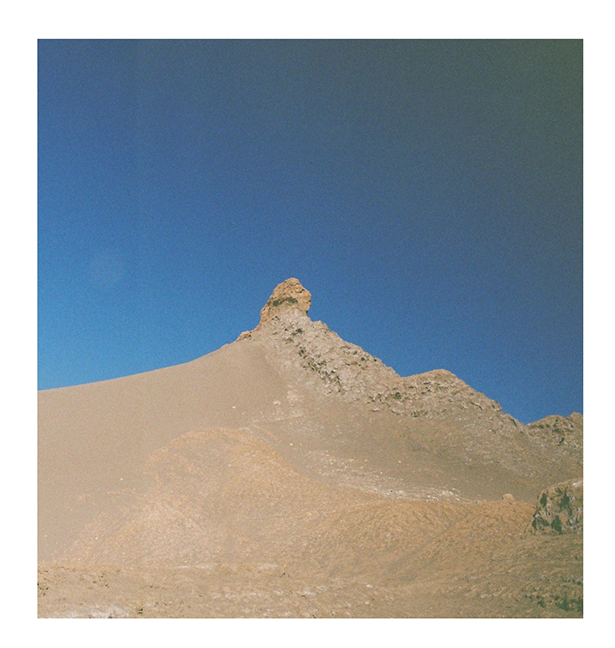
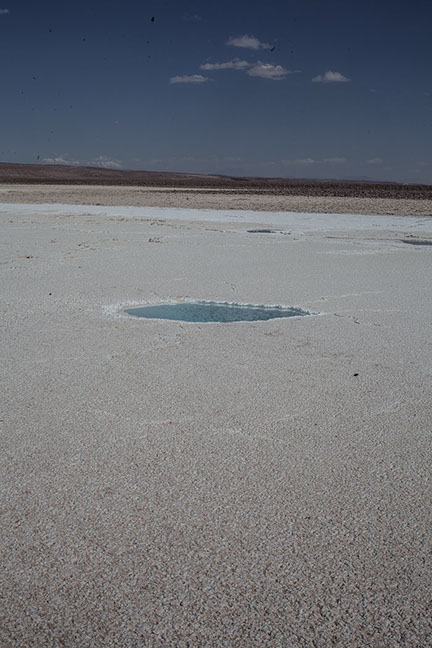
people of water
people of the air
people of the land
people of water
people of the air
people of the land
2,028 feet
only to cycle belief
remember to forget
we walked through time
when they soak the stone
while seeing the sun drink salt
as a crack sung between the ribs
like evaporated mucus asking sand
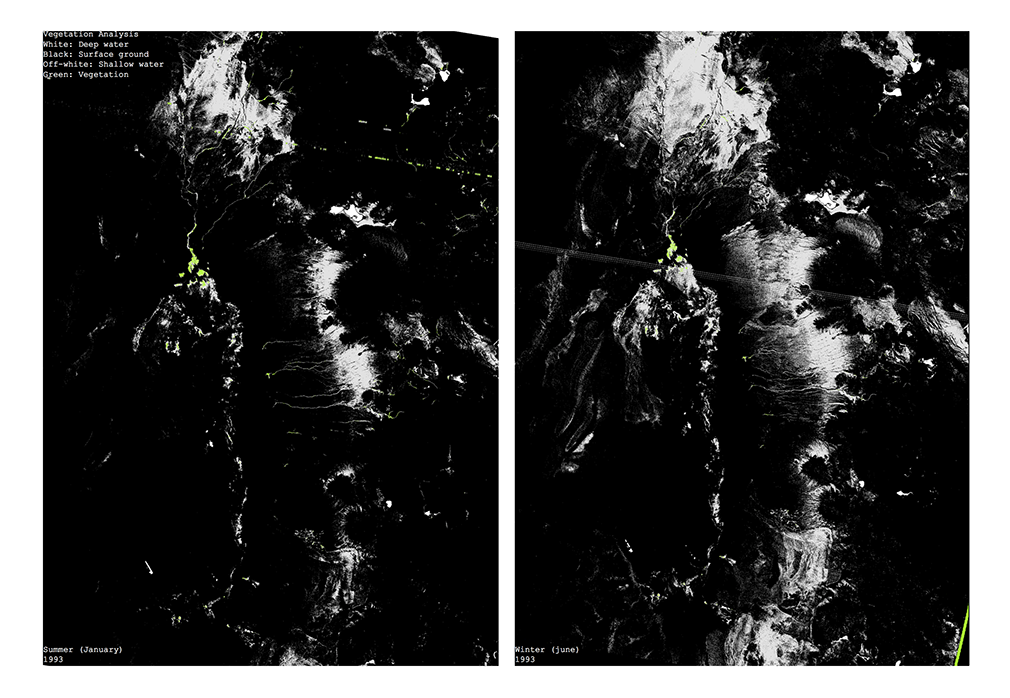
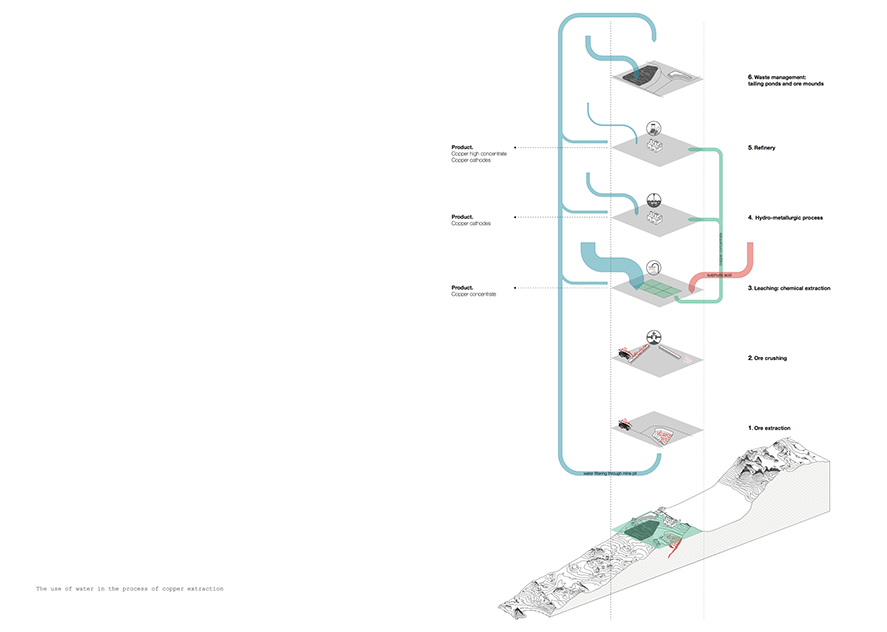
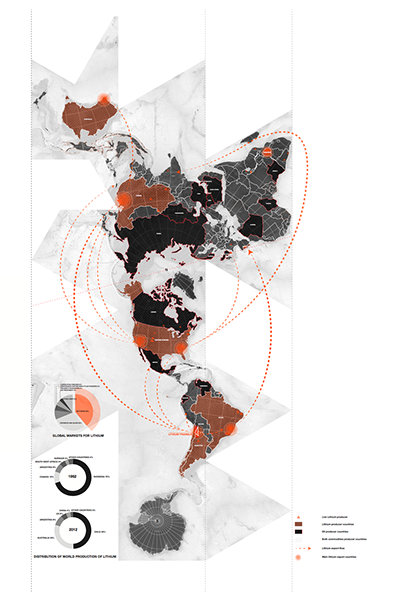
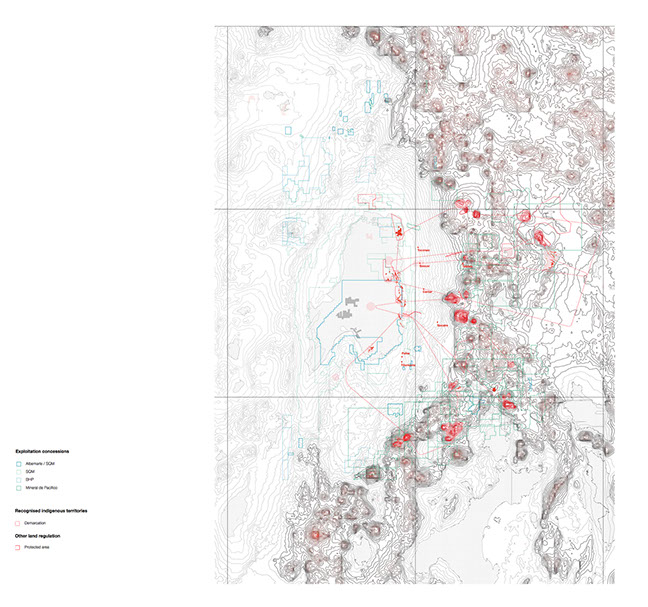
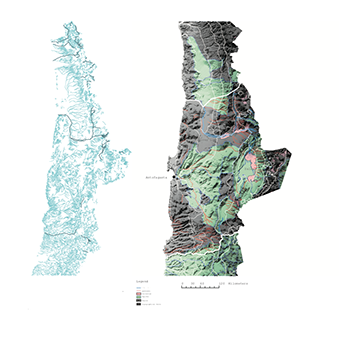
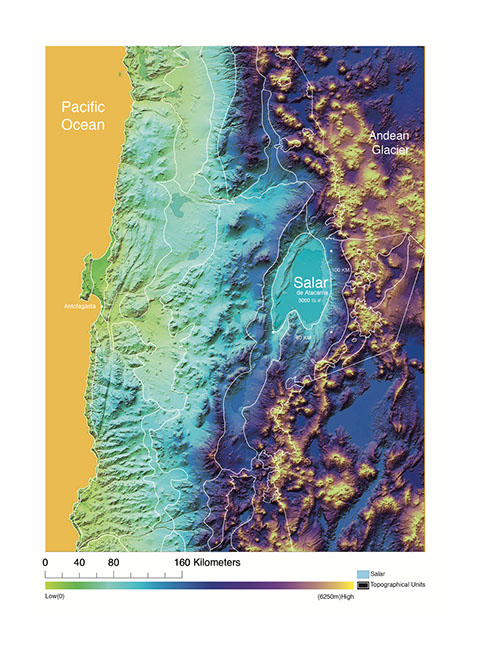
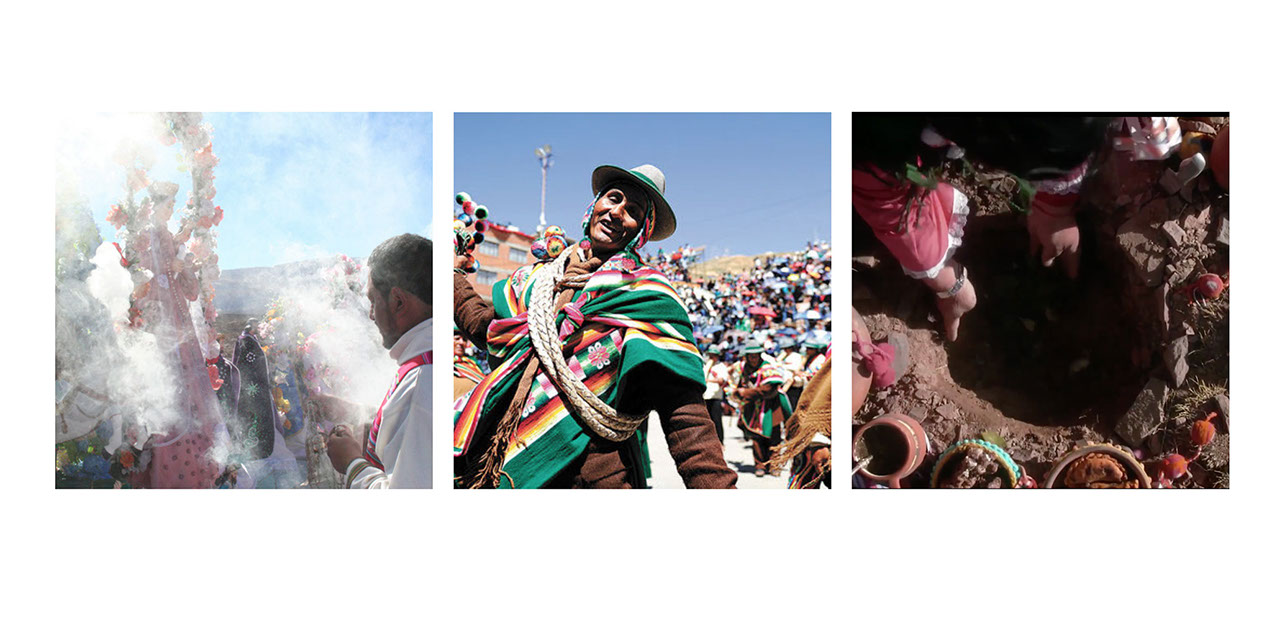


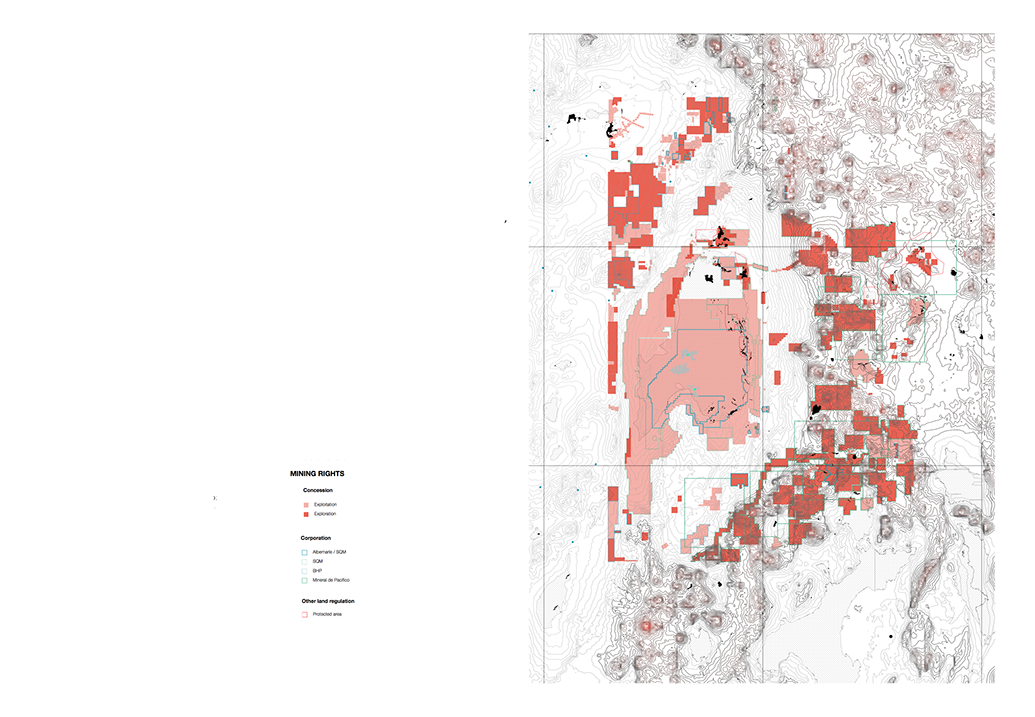
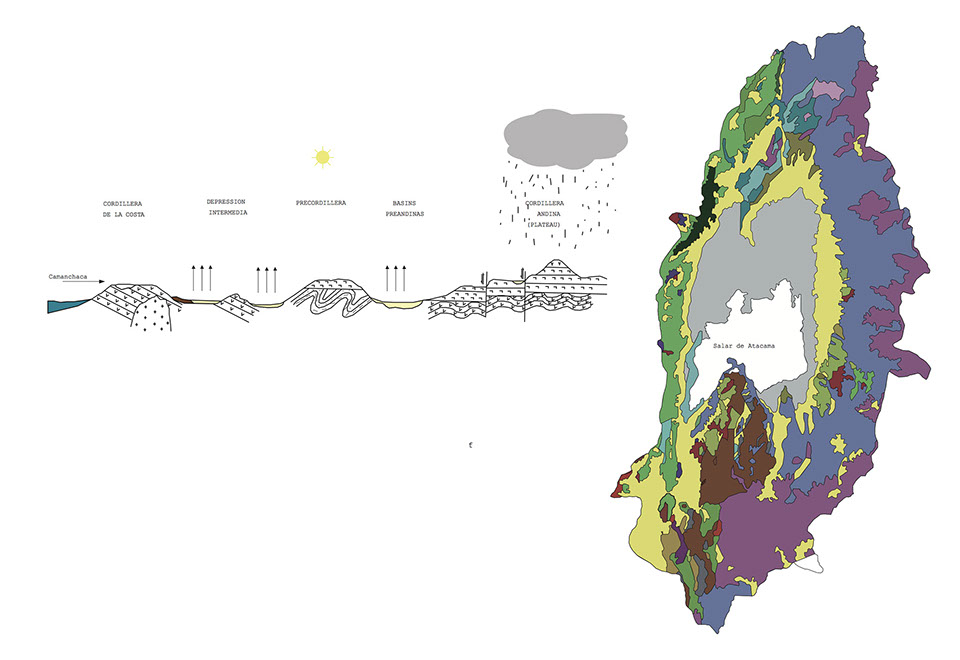

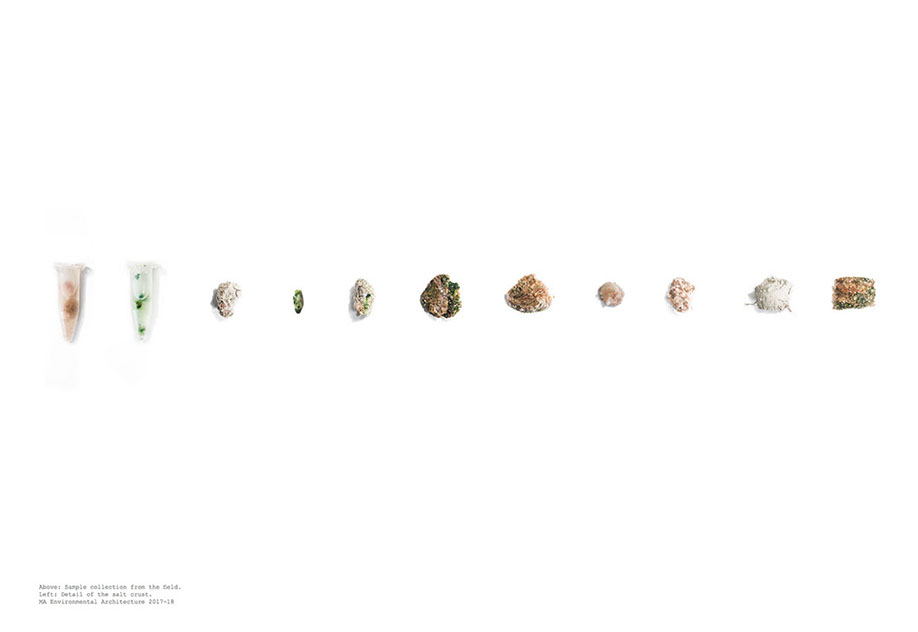
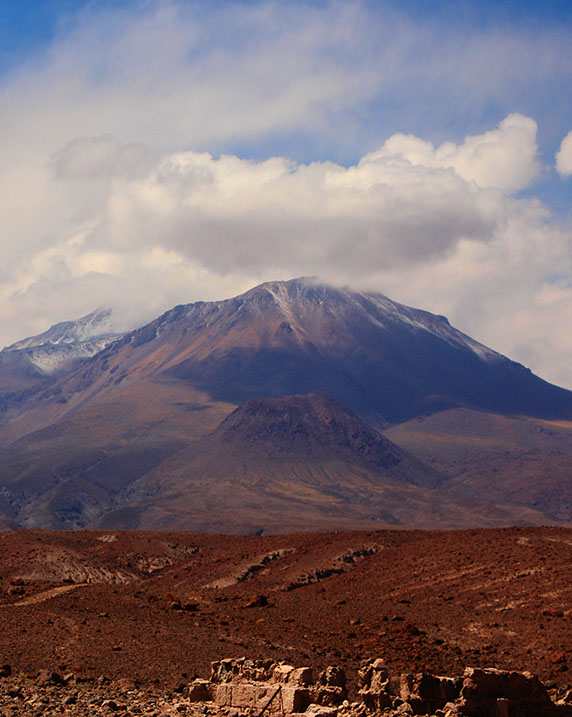
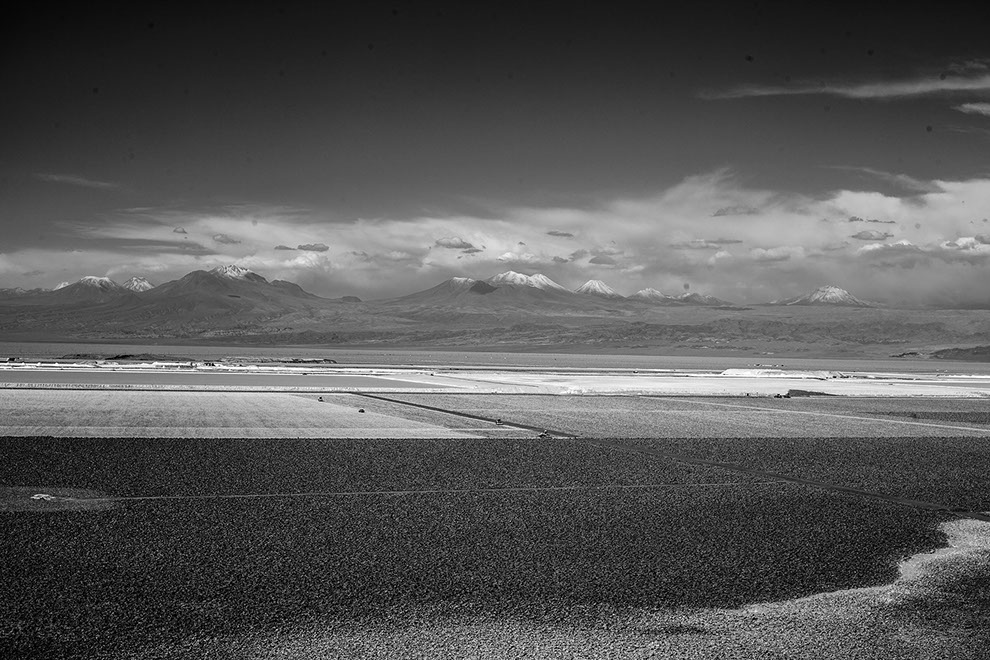
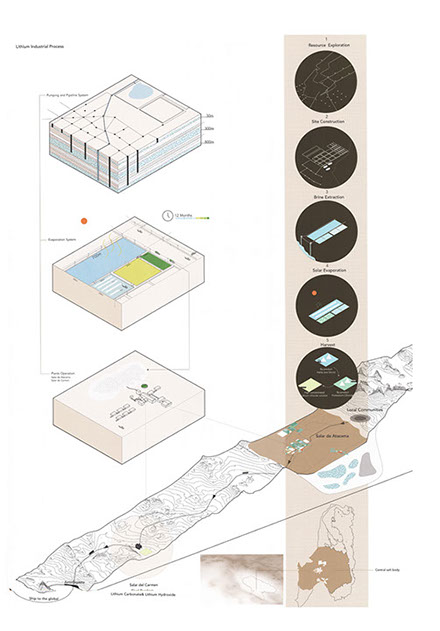
Proxy Analysis
OVERLAPS
The Chilean legislation is clearly a favourable environment for corporations. Land rights, mining rights, and water rights might be insisting on the same territory or parcel, but they are all unpacked. The state can lease or sell them in different packages to different actors according to their demand. It is paradigmatic of the neo-liberal state. Similarly to water rights disputes, we are again confronted with a mentality that clashes with the communal value of resources of the indigenous people, for which land is not a private property, and its limits are not defined by parcelization, but remain porous. Within this system, overlaps of different rights of property and use are perfectly coherent, and not a symptom of a schizophrenic state. This remains true in the case of evidently conflicting overlaps of exploitation concession over protected areas. To cite as an example, the SQM site over the Los Pantanos protected lagoons; or the MdP exploration right over the Salar de Tara, part of the Reserva National de Los Flamencos. Los Flamencos National Reserve was established in 1990, and it is the first protected area in Chile to be co-managed by the State and indigenous people. It is for us to investigate further what is at stake when land rights are so conflicting with each other and underlying such different conceptualisations of the environment; like in the case of sustainable development and protection against mineral exploitation, that translate in such contrasting modes of operating the territory. And what are the implication and consequences on the environment? Are these modes somewhat compatible?
Chemical elements with water recycle section from coast to Andean range Located in the Highlands, over 4000 m above sea level, mainly in Endorheic Basins controlled by the Plio Quaternary volcanism. Brines are under saturated in Sodium Chloride and contain Na +,Ca2 +Mg2 + and K +, as major cations. To correspond to the Saline deposits are young and more space and Genetically related to the Plio Quaternary volcanism and Affected by rainfall. To characterise contain significant concentrations of salts. Boron in the crust, as Ascotán Surire, and hot water, and salts LITHIUM and Potassium of potential interest in the Brine as the Island,Loyoques And Tara. Ship Systems are very dynamic and highly Fragile due to its Location and Geological characteristics, climatic and Environmental, whose Exploitation should be carried out with the maximum respect for the Environment.
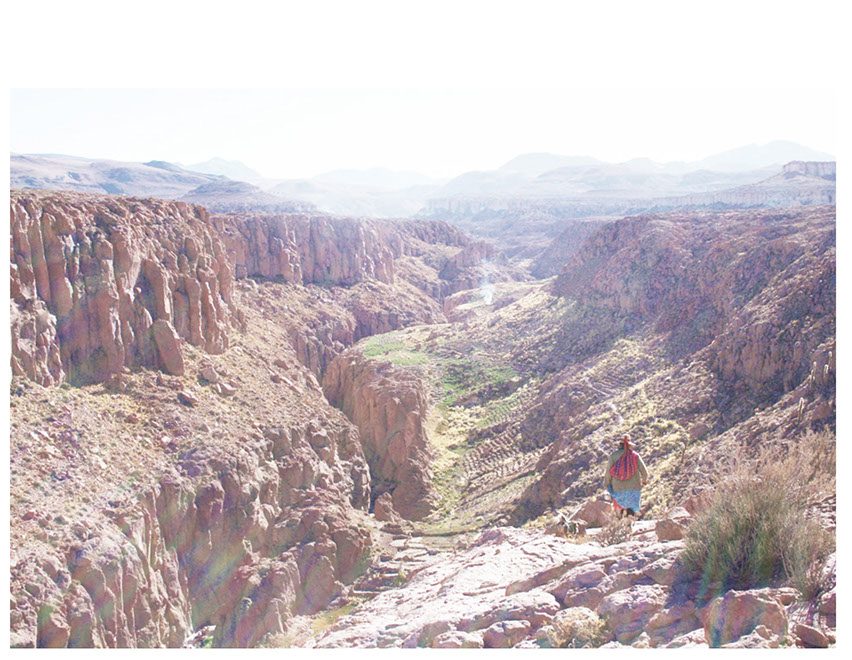
ARCHITECTURAL PROGRAM EXPERIMENTS
To further question our relationship with the lands many perspectives, both human and the natural elements of our site, this film was a key investigation of evidence not only for the conflicts on the land, but also the history of land. Though a series of silent conversations with a series of local plants, yanatin interpreted how the three levels in the Andean perspective is viewed from the perceptive of plant skin through its own view point. There was a translation of the two polarities between the language of the plant, and the human understanding of it, and yanatin was the balancing factor between the two(2) epistemologies. A set of first hand physical relations also took place in the film through the skin to skin interaction between human and plant, based on yanatins instructions from the plant. It was as if the layers of perspective and history was embedded in the removing of the skin of the plant in order to smell what ever was asked to it. The very answer was in the moment the smell was released and engulfed the nose. As the smells were released over the duration of 30mins the answers became more toxic, and intense. Yanatin played a balancing position as there were times when the plants smell released so much history that it engulfed the entire nasal cavity of the human, as if the plant was injecting its perceptive into the very body, as if it wanted you to feel its position of anger, or frustration. There were other times during the 30min exchange where there were gust of pure/sweet smells as well that would tell of a different more relaxed time for the plant, and its history with the land. These transitions were also mediations from yanatin, as they were a reflection of the equilibrium in polarities or opposing conflicts within the expression of the discussion.
AIMS = to look at the tensions of the area through multiperspectivism, which would highlight the competing epistemologies on the land, and in return structure a level of reciprocity for existing elements in the land, while experimenting with becoming the architectural program of the space for future use.
ARCHITECTURAL FUNDAMENTALS
Architectural Space.
In the Quechua language, the prefix yana- means” help,” while its suffix -ntin means “inclusive in nature, with implications of totality, spatial inclusion of one thing in another, or identification of two elements as members of the same category”.[4] Put them together, and yanantin has been translated as “the complement of difference.”However, according to some Andean’s “For us, yanantin doesn’t focus on the differences between two beings. That is what disconnects them. Instead, we focus on the qualities that brought them together. That is yanantin. We don’t really see the differences. That’s why we see them as not necessarily opposed, but as complementary.” Yanantin infuses all aspects of social, and spiritual life within the indigenous Andean world-view. Platt (1986).
Architectural Rituals
When drinks are served, the Macha pour a few drops on the ground as an offering, while at the same time speaking the name of the receiving divinity. This is done twice(2). “This is explained as being yanantin, for it is an example of the connecting pair”.[7] When coca leaves (the most sacred plant of the Andes and an integral part of almost all indigenous ceremonies) are offered to a participant in a ritual, two(2) handfuls are offered to each person, who receives them in two(2) cupped hands. Platt (1986) wrote, “In all such cases, the pairing and the repetitions are explained as being yanantin.”[7]
Architectural Anthropology
The relationship between entities or energies are the essential components within indigenous Andean world-view, involving, “the relationship, the alliance, the meeting, and the unity between two(2) beings, both human and non human.”
”In order to be whole, one has to pair up, complete the cycle, or a tension will exist.” We find that through sacred relationship (relationship with plant, animal, human, thought, and or process of perceiving) we are able to harness power, and experience living energy from a new perspective. Yanantin is defined in thousands of ways, But all involve the relationship, the alliance, the meeting, and the unity between two(2) beings, which can be in multiple forms of communication. What is important is the exchange of understanding and acknowledgement with respect of the other. Two(2) beings, two entities, two cycles. Not necessarily humans. Beings.
Yanantin is manifested in the belief that existence relies on the tension, and balanced interchange between the various “polarities”
(Webb 2012). In this sense, polarities exist throughout the world-view of indigenous cultures, for example,between the wet and dry season. There is a very definitive ideological and practical commitment within indigenous Andean life to bringing these seemingly conflicting opposites into harmony without destroying, or altering either one (Webb 2012). The ubiquitous application of yanantin has obvious advantages in terms of balancing ecological cycles and processes. Brush (1981, p. 81) details the existence of indigenous seed banks and exchange networks which share resilient seeds between communities in order to balance two(2) common polarities; drought in the summer and frost in the winter.
Cave Dwelling Archaeological Site / Communal Ritual Grounds
site = lat = -23.114530°
long = -68.006654°
to LEARN - to KNOW - to REMEMBER
yachay
there is nothing out there to be discovered, because it is already known.
(n)
head, intuition, seeing. (impersonal) utilisation of knowledge, with wisdom. the power of intellect grounded in experience.
shamanic yachai - the wisdom of open
spaces. the attribute of wisdom that involves acquiring knowledge beyond intellectual understanding.
to WORK
llank’ay
(n)
work, labour, industriousness, power of action and labour. law of service, work, and creative expression of individual gifts.
meeting one’s survival needs in order to continue with the spiritual pursuits of life.
power of the body,
the power of physical work.
power of sacred industriousness, of our capacity to act and work in a sacred manner in physical reality;
mastery of/in the physical realm.
to LIVE
kawsay
everything is energy
(n)
Life force, energy that animates the universe: it comes from the collective, from genetics and from spiritual energy. Sami and hucha are its two manifestations. energy that permeates all of creation on various vibrational levels.
Much like chi, kawsay permeates all things in the living universe. kawsay feels warm, dense, and magnetic, and is comparable to gravitational energy in that its essence draws you to the Earth. it is used to heal physical illnesses as well as material conditions in one’s life. maintaining an energy body replete with kawsay is deemed indispensable in shamanistic preventive medicine.
(v) to live.
GLOBAL CONTEXT
Lithium is the third element in the periodic table which has recently become a unique commodity in the global shift towards sustainable or "green" future. It is uniquely due to its following qualities:
- Lightest metal
- Least dense solid element
- High electro-chemical potential
Of all the elements in the period table, the above properties make Lithium one of the most attractive components for high energy-density rechargeable batteries. The Li-ion technology is particularly desired in the emergent market of electricity based transportation applications; in the sizeable market of electronic devices, such as laptops, tablets, and mobile phones; cordless power tools and other household items. It is of particular interest to the rapidly growing electric vehicle battery market, and alternative energy products (such as solar and wind energy storage) both of which are symbolic of the "green" shift, and are designed with rechargeable battery technology in mind. Alternative means of transport, and energy production have had a succinct surge in demand due to growing concerns over pollution which resulted in recent shifts in policy, with the UK, France and other Western countries implementing taxes on gasoline cars as early as 2030, due to predominant concerns over the footprint of carbon dioxide, hydrocarbon-based power plants, and internal combustion-powered vehicles. According to Thomas G. Goonan study on lithium use in batteries, a 40-mile trip in an electric vehicle would require 1.4 to 3kg of lithium equivalent (7.5 to 16kg of lithium carbonate) before requiring a recharge. William Tahil’s concern in ‘Trouble with Lithium’ (2007) Goonan predicts that if 60 million cars that are produced worldwide each year were entirely replaced with electric vehicles, each containing a minimum 5kW battery (requiring at least 1.4kg of lithium carbonate for a hybrid model), demand for lithium carbonate would increase to 420,000t per year, which is at least a five-fold increase of current lithium carbonate production in total. Worldwide lithium resource exploration across the globe has increased dramatically over the years. According to the most recent USGS study, 2015 saw the global Lithium consumption exceed global Lithium production. It is estimated that 30,800t of Lithium carbonate was produced, and 33,000t was consumed. More than 50% was consumed by countries in Asia.
Lithium production wasn’t recorded until 1925. It was first discovered by American explorers in 1962. Within thirty years’ lithium-ion batteries have entered the mass market. Today it is considered a ‘technology metal’ along with another four key ‘ingredients’ essential for rechargeable battery development: cobalt, nickel, graphite, and manganese. Historically, lithium has been mined from two distinct sources – continental brines, and hard-rock minerals. According to Goonan, in his 2009 study, 13% of world’ lithium reserves (in terms of contained lithium) were contained within hard rock mineral deposits, and 87% within brine deposits.
PERCEIPATION AND EVAPORATION
The Atacama Desert is commonly known as the driest non-polar place in the world located in Antofagasta Region, Chile. The average rainfall is about 15 mm (0.6 in) per year. Moreover, some weather stations in the Atacama Desert have never received rain. Periods of up to four years have been registered with no rainfall in the central sector, delimited by the cities of Antofagasta, Calama, and Copiapó. A range of meteorological evidence suggests that the Atacama Desert may not have had any significant rainfall from 1570 to 1971.
The Atacama Desert is so arid that many mountains higher than 6,000 m (20,000 ft) are completely free of glaciers. Only the highest peaks (such as Ojos del Salado, Monte Pissis, and Llullaillaco) have some permanent snow coverage.
The southern part of the desert, between 25°S and 27°S, may have been glacier-free throughout the Quaternary (including during glaciations), though permafrost extends down to an altitude of 4,400 m (14,400 ft) and is continuous above 5,600 m (18,400 ft). Studies by a group of scientists have suggested that some river beds have been dry for 120,000 years. However, some locations in the Atacama receive a marine fog known locally as the camanchaca, providing sufficient moisture for hypolithic algae, lichens, and even some cacti—the genus Copiapoa is notable among these.
Hydrology
Quebrada lines that were analysed to determine whether they would be useful for watershed delineation. This is a result of the disconnectedness observed in the quebrada lines (Figure 2). There are only a few major, perennial quebradas throughout the region, while the majority of the quebrada lines are non-perennial. Furthermore, the quebrada lines are not suitable for watershed delineation due to their lack of connectedness.
ENVIRONMENTS
The Antofagasta Region is located in Northern Chile, which is also known as the Atacama Desert, one of the driest places on Earth. As a result of the harsh environmental conditions in this region, we aim to investigate how water resources are used, and distributed throughout the region.
This study is made up of three parts:
1) a broad scale analysis of resources, aridity, climate and geology throughout throughout regions in Chile, primarily in the Antofagasta Region.
2) an analysis of the topographic structure in the San Pedro de Atacama Commune.
3) undertake a small scale investigation showing the quality of water (according to the chemical elements of sediments) within the Lithium Triangle, and within the western part of the Atacama Region where the landscape consists of extensive mining operations (mostly copper).
Initial spatial analysis demonstrates that the elevation is highly variable throughout the region, ranging from 0 to 6,685 m (Figure 1). Flat lying regions correspond to Salars, or salt flats, whereas higher elevations (with steeper slopes) correspond to volcanic mountain chains that run North-South along the eastern section of Atacama. In addition, the volcanic mountain chain is the part of Andean Glacier, which is enriched with frozen fresh water that periodically melts, and replenishes the subsurface ground water.
LOCAL ECOLOGIES
ATACAMEÑOS
The Atacamanos or Licanantay people have lived, adapted and fostered the northern Chile lands from dates that go back as far as 10,000 years. Human settlements and remains have been found scattered throughout the land, and discovered by archaeologist as one of the oldest cultures on Earth, and one of the most adaptable, and resilient human cultures to thrive in its arid climate. These early settlements can still be found throughout our region of Antofagasta, and play a huge part in understanding the complexities and customs of Atacamanos culture and livelihood. They are the key elements, and evidence of a well adapted social, environmental, and way of life that integrates the ashes of desert sand as art, communal working as a social structure, a cosmological connection with all fragments of Earth, and a changing cultural paradigm with industrial mining. This is the story of the Atacamonos. Starting from the beginning of known remains and environmental surveys the Atacama region was a very dry and inhospitable landscape for early human settlements, and remained a temporary stopping ground for nomadic lifestyles that used it to collect natural resources and food. This nomadic travellers would follow the acute sources of water, and relocate based on their needs and resources within the environment. There settlements required them to not only protect themselves from the natural environment but also be mobile enough to relocate as seasons changed, and new resources were found. Campsites were there main form of architecture and slowly evolved into pit houses. The process consisted of digging a 3 meter pit to protect them from the sun as well as collect thermal mass in the cooling temperatures of the night. As time progressed their nomadic cultures began to form temporary clay, and stone shelters. This followed but them settling near surface water springs that allowed them to cultivate permanent forms of food collection, and develop their culture centred around the canalization of water for seasonal agriculture.
Around this time the domestication of the lama also played a connecting role in there way of life. The mixture of hearing and agricultural technology would later create the spatial organisation that we and in the region today. This connection to the land and water was the very essence of their cultural belief systems and as we look at the changing of the landscape today we can still see this beginning relations to water and land as the primary foundation of the Atacamanos social, economic, and cosmological presence.
CULTURE
The Atacameo Culture is heavily in influenced by the Quechua cultures inherited from the connection to the Incas. Each of them are socially organised in collective assembles that connect them to the communities that share the same ancestral ties to ancestral beliefs. Members of the same community are strongly bonded to each other through family, and cultural ties, and this framework makes up the matrix of the Atacameos sub-groups located in our region of Anafagasta. They each decide on communal matters together, and celebrate communal festivals that link them back to their ancestral roots. Most of these festivals connect to water, and the connection that the local communities have with the cleaning of the canals.
Pachamama, or Mother Earth, is viewed as the source of abundance, or adversity for all those who live on her lands. Pachamama is a living being that connects all rivers, mountains, and landscapes. Every tree, plant, salt grain, dust, crop, and living matter is part of this system. They also see the landscape as living entities, embodying various kinds of spirits, such as those of their ancestors, of the hills and mountains and of the canals and waterways. Waterways are the source of water that not only give water to the plants but are also seen as a vine coming from the mountain. This connection to bodies of water, and their physical human body is also a representation of how they connect with systems of water. They believe that by cleaning the canals they are also cleaning their own bodies while also patronising Pachamama. This indigenous world-view is combined with Catholicism, to which the Atacameños have been converted as a result of colonisation.
Limpia is a ritual that is based on the seasonal sewing of the seeds. It used to be an important way of maintaining bonds within, and between communities. During this ritual communities would come together, and make territorial agreements and was one a meeting places for trade. But as the labour system is changing based on having a increased income from mining hours, fewer and fewer people are still participating in the cleaning of waterways.
MINERALS
There are 3 main kinds of mineral produced in Chile, nitrate, copper, and lithium. Nitrate mineral may be made of nitrate bacteria, and not in the desert originally. However, a new study suggests that these minerals have 3 different sources. One source is 50 kilometres east of the Pacific Ocean Spray. This spray brought chlorine and sulphur, and these elements to the land in the desert, and when they dry they form salt crystal. Other minerals form from air. Chemical reactions of nitrogen in the atmosphere infused with salt and dust form nitrate deposits on land over time. The last one is the rainfall of Andes which is located on the east of Atacama desert (distance is 100 kilometres) , dichromate can be leached into the mineral groundwater flow to the desert. Millions of years later, the mountains become higher, and the change of altitude forces more groundwater to flow to the surface. At the same time, the hot desert climate is getting drier and drier. This drought leads to the deposition of dissolved minerals in the underground water. These 3 kinds of minerals populate in the north of Chile ,especially in the Atacama desert.
RITUAL
Communal Labor characterises the Atacameños way of life. The annual Limpia de Canales (cleaning of the irrigation canals) is held in each atacameños village around the Salar de Atacama in slightly different modes, and on different dates, but always in the spring and at the beginning of the planting season (Babidge 2017). According to Sally Babidge (2007) the cleaning of the canals takes place over three days. Work parties are formed, and prescribed sections of the agricultural fields. A roll is called of all who own land in that sector, and who must work in the cleaning or pay a obligatory fee. The work party is made up of landowners, individuals who work for an absent or non-able bodied landowner, (referred to as ‘peones’ if they receive pay), and in the last twenty years some guests (such as visiting researchers). Throughout Sally Babidge’s experience, she has noted:
“Men and women clean the irrigation channels from bottom to top, and scrub the irrigation tanks of algae and debris. Throughout, minor offerings to the Pachamama of liquor and coca leaf are made onto the ground or into the canal by each worker each time they consume these, and the head of the work party and ritual leader similarly make offerings as they make their way uphill.”
MINING RIGHTS
As of 2012, the 42% of Chilean territory was covered with mining concessions. If we were to represent the region of Antofagasta from the mining rights point of view, we would observe a land that is cluttered with often times overlapping concessions. In the Salar de Atacama area, the density of concession might be slightly lower, but it is still a fitting example to to refer to, in order to unfold the mining concession system. In the salar, the concessions are dominated by four different companies, the major of which is SQM, that hold different regimes of exploration or exploitation. Why are they significance, and what are their spatial implications. The Chilean mining regulatory system divides concession rights in two different types: exploration and exploitation. The exploration concession gives the right to explore the mining potential, and qualities of a parcel of land and it can be possibly upgraded and converted to exploitation concession if the exploration is successful. The exploration concession has a validity of two years, renewable for a further two years. At the moment Mineral de Pacifico has exploration rights concentrated in the particularly fragile environment of the Andean highlands, East of the Salar de Atacama. This peculiar territory also corresponds to the ‘motherland’ of the Atacameños. The exploitation rights in the salar area are almost exclusively held by Albemarle, and SQM.
The exploitation concession gives the right for the actual extraction, and development of the mine. Every mineral found underground can be extracted and produced, with the exception of lithium, uranium, petroleum, and the aquifers: the latter are considered strategic resources, and subjected to a special legal framework. To proceed with their extraction, the corporations need to obtain a different type of concession.
Taxation wise, the exploitation concession does not expire, but companies pay the State an annual lease based on the surface of the mine, and royalties on production. Furthermore, this type of concession does not give right to exploit surface minerals, that are reserved for the land owners. The Chilean legislation De Facto manages the countries natural resources as resources ready to be marketed: this is evident in how surface land rights, mining concessions, and surface and underground water rights are distinct and separated in the regulatory system. The state retains the inalienable, and exclusive right over the mines, and leases the concessions regardless the ownership or other forms of regulation on surface land.
THE PROCESS OF LITHIUM EXTRACTION
The Salar de Atacama is located in a closed basin between the Cordillera de Los Andes to the east, and the Domeyko mountain
range to the west, where there is high concentration of potassium and lithium. Two large brine operations SQM, and Albemarle shared the salar and produced more than 30% of global lithium chemicals. Chemetall Foote operated the first plant and produced lithium carbonate in Salar de Atacama in 1984. Now the company is owned by Albemarle. SQM began producing potassium chloride the Salar, and later joined the Lithium market and started producing lithium carbonate 1997. With the development of extractive technologies, and a variety of experience from mineral extractions, the whole process of lithium extraction was much more efficient and provided a higher yield. Both mining corporations SQM and Albemarle have the same territorial strategy for the process of lithium extraction. Producing potassium, lithium chloride, and a series of by-products from extracted brine in Salar de Atacama, and producing lithium carbonate and lithium hydroxide in two chemical plants near the port city Antofagasta, Salar del Carmen managed by SQM and La Negra owned by Albemarle.
SQM made concessions with CORFO which is a national corporation that agrees SQM has production rights on the land until 2030. Drilling of wells, construction of roads, camps, pipelines, ponds, chemical plants, detailed engineering and development of hydro-geological models are the procedures of the preparation stage of lithium extraction. When the salar brine is pumped up to evaporation ponds through the pipeline, the operation of extraction begins. There are two different areas of the Salar that offer brines with different ingredients to produce a series of products. One contains unparalleled concentration levels of potassium and lithium while the other contains sulphates and boron. The extreme sensitive climate condition and high level of altitude combine to speed up the process of evaporation. After several sequences of evaporation, the brine is concentrated as a solution which produces by- products of potassium chloride and lithium chloride. These are the main solutions for producing Lithium Carbonate. Then the concentration of lithium chloride will be transported to the chemical plant located in the Salar del Carmen, close to the coastal city of Antofagasta. The high concentrated brine which contains lithium chloride will be processed to produce lithium Carbonate and Lithium Hydroxide, which are the most significant ingredients of the lithium battery.
RECIPROCITY
ayni
balance through selfless service. the core guiding principle of the Andean peoples which promotes a lifestyle of sacred reciprocity.
(n)
reciprocity, balance, harmony. right relationship; sacred interchange. communal work; mutual aid and work loaned. ayni states that everything in the world is connected. it is one of the most important principles - a backbone of life.
ayni is not based on compensation, but exchange of energy between humans, nature and the universe. sacred reciprocity, the principle of energetic exchange, of give and take among all things, upon which life in the Andes depends.
(v)
interchange. to practice ayni with all people and all of nature is to open the heart. community members help other members when support is needed for activities such as agriculture, or building a house; the host thanks the helpers with food and drink; the favour is returned by assisting those who helped; or helping others in need, completing the reciprocity. importantly, this does not involve monetary exchange.
ayllu
(n)
relative; family; community a self-governing and land-owning peasant community in the Andean highlands. may refer to either a village, a kinship group, or a class-like organisation, usually based on collective agriculture. a kinship group holding land in
common. a territory-based, extended family that forms the basis of productive relations even today [and] was conceived in terms of common descent from oppositional but complementary mythological ancestors. a clan or group of families. relations, kindred, clan.
an indigenous community composed of group members sharing a common focus and usually brought together as a social, political, and religious unit by their common connection with the sacred places where they live and commune through their relationship with surrounding elements. This space not only exists for the living ayllu members, it also includes deceased people spiritual ancestors, and the machula aulanchis regarded as protectors and repositories of vitality and well-being for the human community.
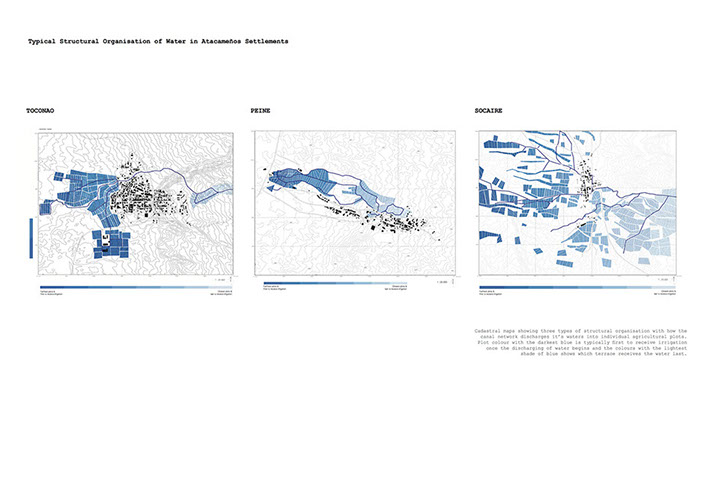
Knowledge Exchange
The overarching theme of exploring alternative environmental futures in the Atacama region focuses on establishing an ecosystem of knowledge exchange, within and between local communities, visiting researchers, and the landscape itself. Besides the ‘salt works’ an additional set of practices that are revisited include agriculture and farming, and indigenous medicinal approaches, which are brought together under coordinated hydrological and energy systems, taking advantage of innovative use of solar technologies and the local flora.
A series of ‘devices’ are scattered across the landscape: devices that are meant both to introduce hybridized modes of practice in the form of spatial experiments, as well as to accommodate the visitors, while offering gathering points that could act as catalysts in an emergent, experimental processes of knowledge exchange.
embodied learning.
oral history.
dance.
enactment.
myth.
ecological knowledge.
relations.
careful listening.
an understanding = world flows in cycles.
careful behaviour.
cyclical thinking.
world flows in cycles.
birth and rebirth.
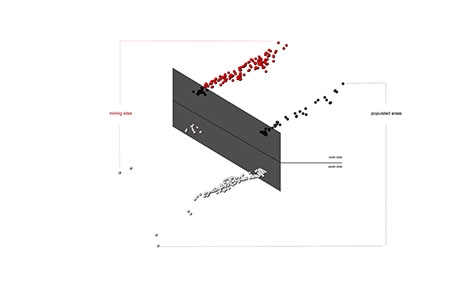
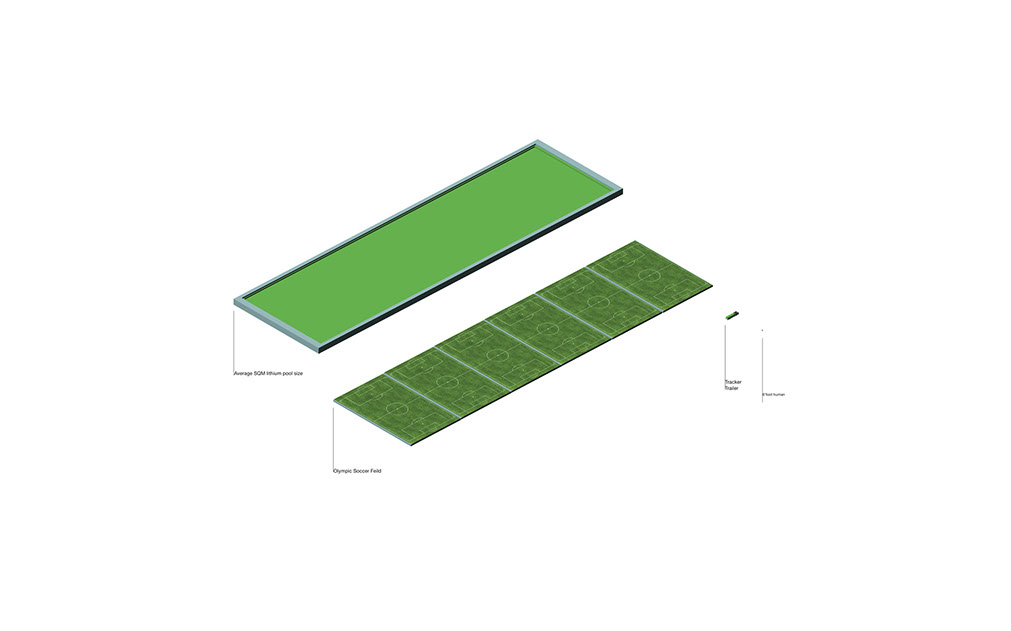

These three types of structural organisation with how the canal network discharges it’s waters into individual agricultural plots. Plot colour with the darkest blue is typically first to receive irrigation once the discharging of water begins and the colours with the lightest shade of blue shows which terrace receives the water last.
80,000,000
livers as litres
to see a brunt tongue
in an ocean twice a second
TYPICAL STRUCTURAL ORGANIZATION OF WATER IN THE ATACAMAONOS SETTLEMENTS
careful observation
knowledge
creation.
ways of relating between humans and ecosystems.
cycles.
responsibility.
long-term inhabitation.
(knowledge/intimate understanding) of place
patterns.
poetry.
dreams.
green gold green food
green gold green food
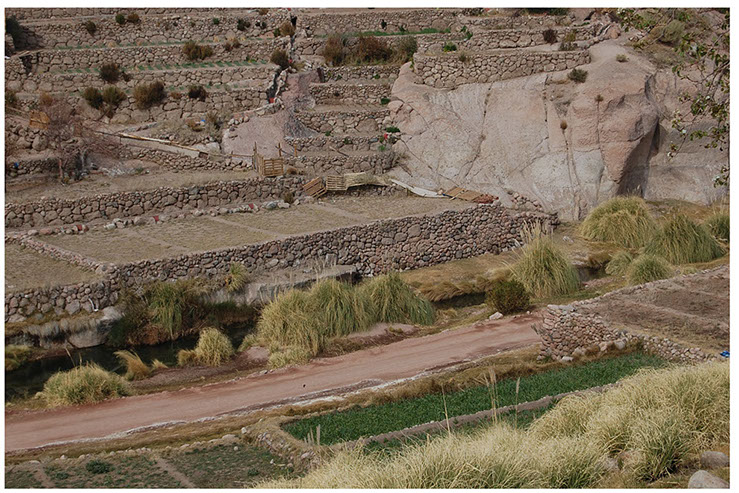
people of water
people of the air
people of the land
LITHIUM TRIANGLE RESEARCH = AYNI : A METABOLISM OF RECIPROCITY
The last decade saw the growth of economic activity and technological advancements towards sustainable development and ‘cleaner’ energy. This has accelerated the growing demand for raw materials. Resource extraction is becoming increasingly volatile in relation to the uncertainties that surround the geographical patterns of production. The Atacama Desert in Chile is a sand swept rock-scape spanning a 1,000 kilometre strip of land on the Pacific coast. It is one of the driest regions on Earth with almost no history of precipitation. It is located 2,400m above sea level, between the Andes and the Chilean Coastal Range - the sacred mountains that have shielded this region from rain for centuries. From afar this remote desert has been described as ‘terra-nullius’ and depleted of any signs of life. However, on the contrary - Atacama is scattered with mineral rich salt fats, oases and lagoons, which encompass rich and complex social and natural ecologies, which are increasingly subject to large-scale mineral extraction activities and rapid development of its associated
infrastructures. The Atacama Desert makes one third of what is referred to the
‘Lithium Triangle’ which encircles Chile,Bolivia and Argentina.
It has been estimated that the triangle holds at least 75% of world’s lithium supply in its mineral-rich salt flats. Our project focuses on the Atacama Desert in Chile in particular, as it is currently the biggest, and most developed producer of lithium in the world. Lithium reserves in the Salar de Atacama were discovered in early 1960s and since then, the site of extraction has rapidly expanded and intensified. It is projected that demand for lithium is expected to rise between three to four times by 2025 which will dramatically accelerate the expansion, and exploitation of existing and new resource bases, which are concentrated within the territories of the lithium triangle. A metabolism of reciprocity.
Existing ecologies continue to reinvent and adapt to the changing landscape of the Atacama Desert, but from our findings we can anticipate that growing pressure on the region for lithium extraction will have major implications on existing and future systems of living. Followed by nine months of extensive research, and three weeks of field work, where a series of projects have crystallised, the overarching theme of exploring alternative environmental futures in the Atacama region focuses on establishing an ecosystem of knowledge production and exchange, within and between local communities, visiting
researchers and the landscape itself.
Research Team: Yussef Agbo-Ola
Gabriele Grigorjeva
Yifei Guan
Vanessa Lastrucci
Nicholas Petridis
Liyuan Zhou








